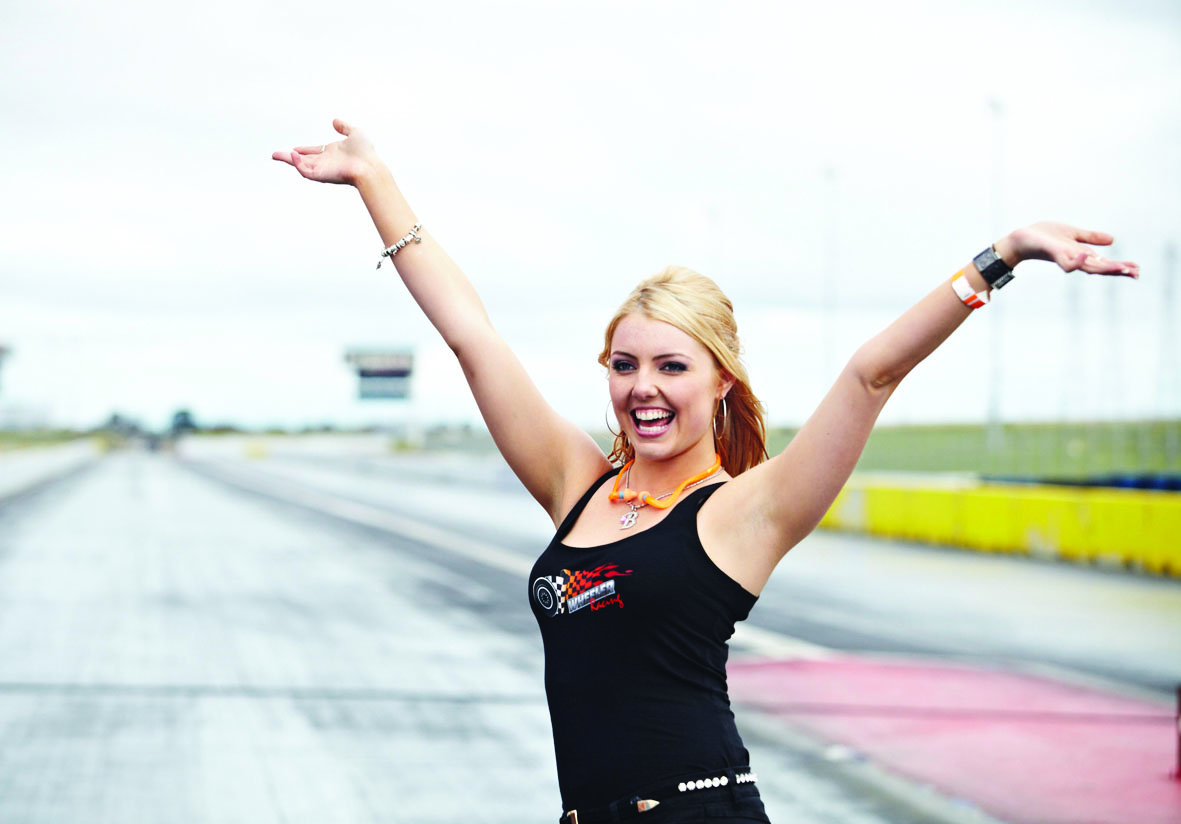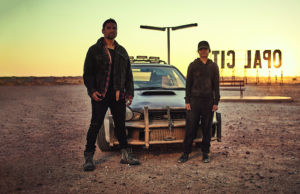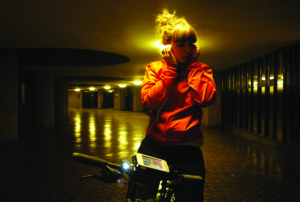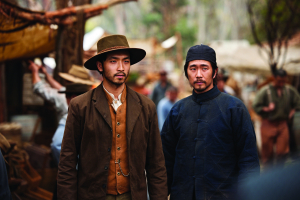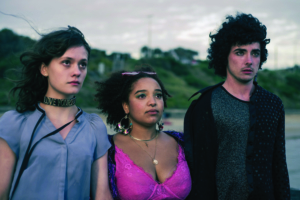Upper Middle Bogan is a sitcom about family and snobbery in the time-honoured tradition of The Beverly Hillbillies, To the Manor Born, The Fresh Prince of Bel-Air and Keeping Up Appearances. First aired in August 2013 on ABC1, the series follows Bess Denyar (Annie Maynard) as she discovers she was adopted and seeks to build a relationship with her birth parents, Wayne and Julie Wheeler (Glenn Robbins and Robyn Malcolm). Whereas Bess is an upper-middle-class doctor with a posh mum (Margaret, played by Robyn Nevin), architect husband (Danny Bright, played by Patrick Brammall) and privately educated teenage twins (Edwina and Oscar, played by Lara Robinson and Harrison Feldman), the Wheelers and their other children – Amber (Michala Banas), Kayne (Rhys Mitchell) and Brianna (Madeleine Jevic) – run an outer-suburban drag-racing team. And when Bess first sees Wayne and Julie, she’s crestfallen: ‘They’re bogans,’ she interjects, to which Danny responds, ‘Don’t be judgemental. That’s Margaret’s job.’
The stage is set for the collision of two Australian worlds ‘at opposite ends of the freeway’.[1]‘About’, Upper Middle Bogan, ABC website, <http://www.abc.net.au/tv/programs/upper-middle-bogan/>, accessed 4 April 2014. The opening credits show Bess in her BMW four-wheel drive, heading down her leafy street, onto the freeway and deep into the suburban sprawl. To the jaunty strains of Mel Tormé singing ‘Comin’ Home Baby!’, she pulls into the driveway of the Wheelers’ monstrous McMansion. It’s a strikingly apposite image because, in Australia, the figure of the bogan personifies a spatialised cultural division based diffusely on perceptions of low class, limited education and poor taste.[2]Chris Gibson, ‘Welcome to Bogan-ville: Reframing Class and Place Through Humour’, Journal of Australian Studies, vol. 37, no. 1, March 2013, pp. 62–75. Many TV comedies that riff on bogans content themselves with cataloguing particular tastes, habits and pop-cultural touchstones that are quintessentially bogan, but which, in fact, are also embodied, done and consumed by Australians more broadly. What makes Upper Middle Bogan unusual in the television genre broadly called ‘bogan comedy’ is its focus on mobility.
Place in bogan comedy
Mary-Anne Fahey’s schoolgirl character Kylie Mole popularised the word bogan in the 1980s sketch show The Comedy Company, which presents it as ‘a synonym for dag or dork […] and second, as a denigration of the undereducated or socially-disadvantaged’.[3]ibid., p. 63. Indeed, the bogan is a complex, slippery figure that eludes empirical definitions. It cannot be fully understood through academic theories of class or subculture,[4]Barbara Pini & Josephine Previte, ‘Gender, Class and Sexuality in Contemporary Australia: Representations of the Boganette’, Australian Feminist Studies, vol. 28, no. 78, December 2013. through the nerdy, teleological etymology that prevails in linguistics,[5]Bruce Moore, Speaking Our Language: The Story of Australian English, Oxford University Press, Melbourne, 2008, p. 173. See also Kim Stephens, ‘Bogan Pride: Queensland Linguistics Researcher Looks at the Evolution of the Word’, Brisbane Times, 2 December 2013, <http://www.brisbanetimes.com.au/queensland/bogan-pride-queensland-linguistics-researcher-looks-at-the-evolution-of-the-word-20131202-2yld4.html>, accessed 12 April 2014. or through the jokey pseudo-anthropology that dominates popular-media discussions of it.[6]For example, see E Chas McSween et al., Things Bogans Like, Hachette, Sydney, 2010; and E Chas McSween et al., Boganomics: The Science of Things Bogans Like, Hachette, Sydney, 2011. This is because bogan is relational: its meaning shifts depending on the ideological purposes of different people in different circumstances. Merely claiming to define bogan is an assertion of cultural authority.
But in the public imagination, bogan is inextricably linked with place. When I was researching my Master’s thesis about media representations of bogans,[7]Melissa Campbell, ‘Bogan: Exploring Images of Australian Cultural Marginalisation’, Master’s thesis, University of Melbourne, Victoria, 2004. people would regularly offer jokey suggestions of towns, suburbs and specific venues I could visit for ‘fieldwork’. Furthermore, people who live in locales popularly associated with bogans suffer real stigma in their work and social lives.[8]Amy McNeilage, ‘Any Self-respecting Bogan Knows – “West” Is Passe’, The Sydney Morning Herald, 23 November 2013, <http://www.smh.com.au/comment/any-selfrespecting-bogan-knows–west-is-passe-20131122-2y0ji.html>, accessed 12 April 2014. In my lifetime, I’ve also noticed bogan gradually taking over from older, regionally specific terms such as bevan in Brisbane, chigger in Hobart and booner in Canberra.[9]Leo Shanahan, ‘The Lost Tribes of Bogan: Booners, Westies and Bevans’, The Punch, 4 August 2009, <http://www.thepunch.com.au/articles/the-lost-tribes-of-bogan-booners-westies-and-bevans/>, accessed 6 April 2014. The Sydney term westie, meanwhile, has taken on different connotations as the western suburbs have become more ethnically diverse. And it is this new western Sydney that provides the setting for Paul Fenech’s anarchic ethnic sitcom Pizza, which gets its energy from the grotesque depths to which it’s willing to sink in pursuit of a gag and from the rapid-fire interplay between its protagonists. At its best, Pizza probes the hypocrisies of authority figures – police, government, celebrities and the media – by portraying them as pompous, undignified and completely unable to curb the antics of the show’s minimum-wage pizza-delivery antiheroes.
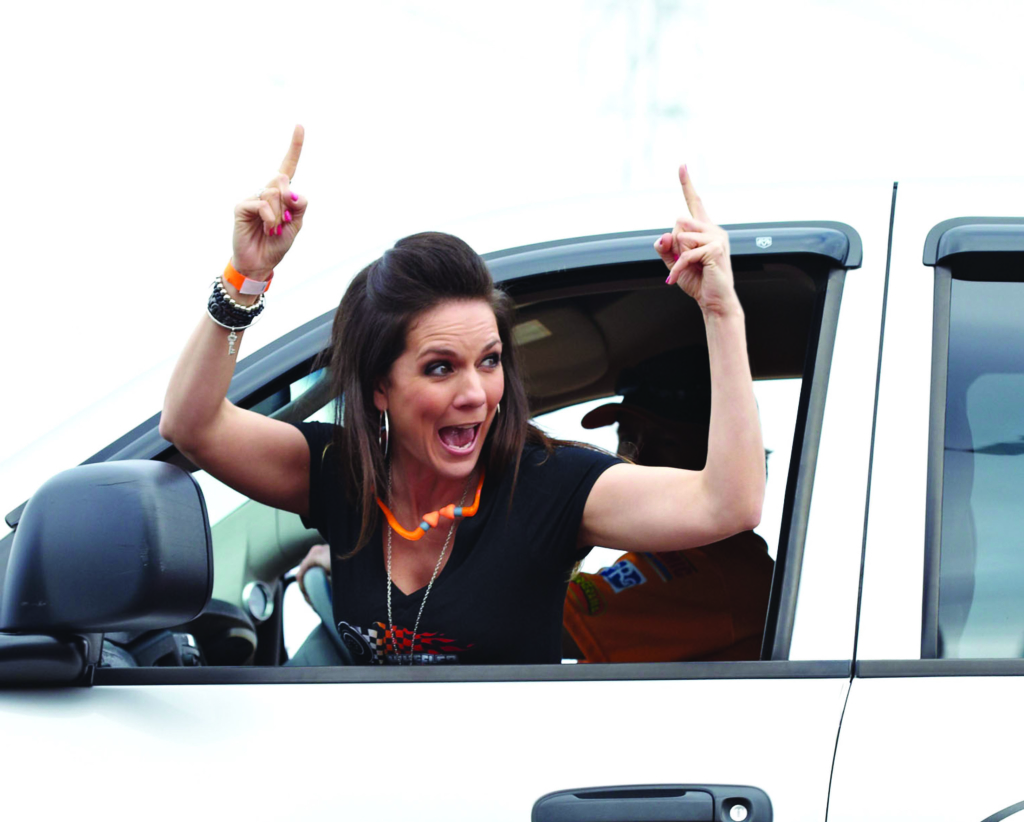
A notable figure from Pizza is Rebel Wilson, who played Toula, the controlling girlfriend of Lebanese drug dealer Habib (Tahir Bilgiç). She later joined the ensemble of sketch show The Wedge, which portrays stereotypical bogan characters including Leanne and Sherine (Wilson and Kate Jenkinson), who spend their days playing poker machines while Sherine’s seven ‘bloody kids’ are left in the car park; delusional dole bludger Henry Bumstead (Adam Zwar); and hapless professional athlete Mark Wary (Jason Gann), who parodies Australian cricketers and footballers. Wilson’s subsequent star vehicle was Bogan Pride, which, despite its title, is much less about bogan self-identification than about teenage dorkdom in the Kylie Mole sense. Protagonist Jennie (played by Wilson) sits firmly in the Australian cinematic tradition of downtrodden suburban girls who dream of social success via musical kitsch, such as Jackie (Jo Kennedy) in Starstruck (Gillian Armstrong, 1982), Fran (Tara Morice) in Strictly Ballroom (Baz Luhrmann, 1992), Muriel (Toni Collette) in Muriel’s Wedding (PJ Hogan, 1994) and the titular character (Tania Lacy) in Titsiana Booberini (Robert Luketic, 1997).
Bogan suburbia is always somewhere else, somewhere marginal, and associated with values and tastes that viewers are invited to reject. But what makes Upper Middle Bogan unusual is that it never names its locations, which are only vaguely emblematic of class.
Much as The Wedge is set in the fictional suburb of Wedgedale, Bogan Pride is set in fictional Boonelg. These imaginary places join Kath & Kim’s aspirational, outer-suburban Fountain Lakes and Pizza’s sardonically named Hashfield as spaces that quarantine the bogan from viewers’ lived experience – even though these locales are nonetheless intended to evoke real Australian localities. Bogan suburbia is always somewhere else, somewhere marginal, and associated with values and tastes that viewers are invited to reject. But what makes Upper Middle Bogan unusual is that it never names its locations, which are only vaguely emblematic of class. Strikingly, Upper Middle Bogan dramatises the push and pull between the non-bogan self and the bogan Other by putting its protagonist in places where she must identify with both bogan and non-bogan and mediate between her two families. Whenever Bess’ family travels to meet the Wheelers, they can’t help whingeing about how uncomfortably far away they are – which the Wheelers never do when they travel to Bess’ tasteful inner-suburban home. Being out of one’s geographic comfort zone, the series implies, is most keenly felt by the middle class – a group accustomed to being the audience of bogan spectacles, not participants in them.
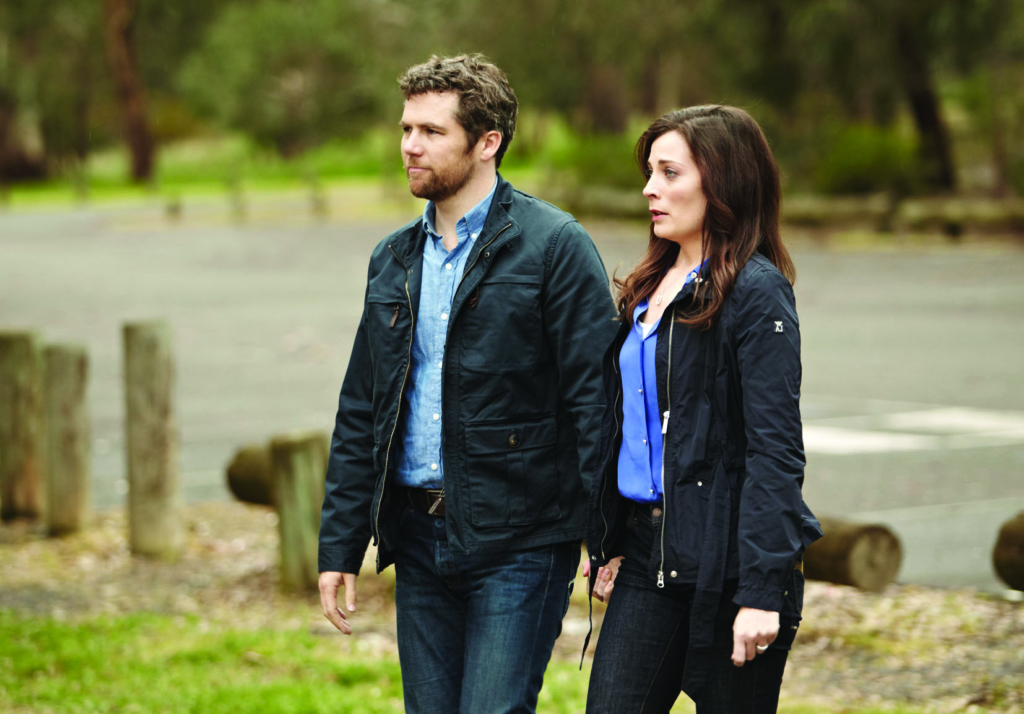
Navigating the material conditions of class
By the 1990s, the bogan had come to designate a suburban lumpenproletariat: a poor, unemployed underclass living parallel to ‘normal’ Australia, but displaying deviant and even criminal values. The idea of deviance arising from socioeconomic lack was regularly invoked around this time, as in public discussions surrounding murdered Moe toddler Jaidyn Leskie[10]Melissa Campbell, ‘Little Bogan Lost: Examining Media Treatment of the Jaidyn Leskie Murder Case’, Media International Australia, Incorporating Culture & Policy, issue 104, August 2002, pp. 116–26. and about the three unemployed Paxton siblings who notoriously refused jobs offered by A Current Affair.[11]David Hetherington, ‘Paxtons Have Gone but Dole Trap Remains’, The Australian, 18 August 2012, <http://www.theaustralian.com.au/national-affairs/opinion/paxtons-have-gone-but-dole-trap-remains/story-e6frgd0x-1226452874460>, accessed 20 April 2014. Matching the increased attention it was receiving in the ‘real’ world, the abject bogan likewise came to dominate a strand of Australian cinema that included Idiot Box (David Caesar, 1996), The Boys (Rowan Woods, 1998), Mallboy (Vincent Giarrusso, 2001), Animal Kingdom (David Michôd, 2010) and Snowtown (Justin Kurzel, 2011).
Upper Middle Bogan shrewdly acknowledges the intended audience of these arthouse bogan visions when Margaret refuses to walk around the rural town where the Wheelers are competing for their drag-racing national championships. ‘I’ve seen the ads for Snowtown,’ she sniffs. ‘Would it kill the Australian film industry to make something happy with Geoffrey Rush in the Barossa Valley?’ Margaret’s snark points to Sam Leith’s distinction between ‘comedy by the working class, for the working class, or about the working class’,[12]Sam Leith, ‘Whatever Happened to the Working-class Sitcom?’ The Guardian, 25 January 2011, <http://www.theguardian.com/tv-and-radio/2011/jan/24/working-class-sitcoms>, accessed 4 April 2014. and much debate has similarly focused on whether creative teams intend to sympathise with or ridicule bogan characters.[13]‘Enough to Make You Gropeable’, The Sydney Morning Herald, 25 October 2003, <http://www.smh.com.au/articles/2003/10/24/1066974307401.html>, accessed 20 April 2014.
Fenech insists that his shows Pizza and Housos attract a self-identifying bogan audience who enjoy seeing farcically heightened versions of their lives on screen: ‘I like to root for the underdog no matter what. I’ve got more friends who are like characters in Housos than further up the chain.’[14]‘Housos Is TV for Bogans’, The Sydney Morning Herald, 19 October 2011, <http://www.smh.com.au/entertainment/tv-and-radio/housos-is-tv-for-bogans-20111018-1lyhb.html>, accessed 14 April 2014. But his work is marked by a gleeful chaos amid which anyone who attempts to impose standards of taste or morality is dismissed as a ‘stooge’. Set in the fictional Housing Commission stronghold of Sunnyvale, Housos presents itself as the lumpenproletarian antithesis of the polite, middle-class suburbia depicted in Neighbours: ‘Neighbours gettin’ to be good friends?’ sneers its ugg-booted antiheroine, Shazza (Elle Dawe), in the opening credits. ‘Yeah, fuckin’ come down to Sunnyvale and say that!’ Meanwhile, The Bogan Hunters, Fenech’s latest project, uneasily places Housos’ character comedy within a pseudo-anthropological ‘nature documentary’ genre. Intriguingly, Fenech claims he’s qualified to embark on this kind of study because he makes comedy for bogans. So, rather than disempowering bogans by presenting them as scrutinised objects of academic enquiry, Fenech appropriates the language of anthropology to push into view aspects of Australian life with which he identifies, but which he believes most Australians are too afraid to confront: ‘Well, don’t shoot the messenger. This is the bogan world. Like it or love it. It exists.’[15]Nick Galvin, ‘Housos Stars Reveal Australia’s Biggest Bogans: “I’d Probably Be Scared”’, The Sydney Morning Herald, 1 April 2014, <http://www.smh.com.au/entertainment/tv-and-radio/housos-stars-reveal-australias-biggest-bogans-id-probably-be-scared-20140401-35vpo.html>, accessed 21 April 2014.
Upper Middle Bogan is more conciliatory. It lampoons fears about class, but takes care to demonstrate that they are unfounded, showing that class is a relative position to be perceived, not a moral state to be imposed.
In a refreshing contrast, Upper Middle Bogan is more conciliatory. It lampoons fears about class, but takes care to demonstrate that they are unfounded, showing that class is a relative position to be perceived, not a moral state to be imposed. Its characters are sympathetic, rounded individuals rather than classed caricatures.
Danny is perhaps the show’s biggest snob. He views the Wheelers as morally tainted and fears his kids’ futures will also be besmirched by contact with them. But the series emphasises that Danny’s real fear is being replaced as his kids’ mentor. He tries to dissuade dimwitted Oscar from filming his lowbrow mechanic uncle Kayne for a school project about ‘inspiration’, only for the boy to produce a surprisingly astute portrait of Kayne as a person whose joie de vivre he admires. Danny also frets about whether Edwina’s friendship with her cousin Shawn (Dougie Baldwin) is sexual. He summons Wayne and Shawn for an intervention and blurts, tactlessly: ‘You had my wife when you were sixteen. Amber had Shawn when she was ten or something. I do not want to see Edwina becoming part of the Wheeler teenage trifecta!’ Mortified, Edwina reveals that Shawn is merely her confidant – she’s being bullied at school, and Danny’s assumptions make him no different from the mean posh girls who are trying to shame her.
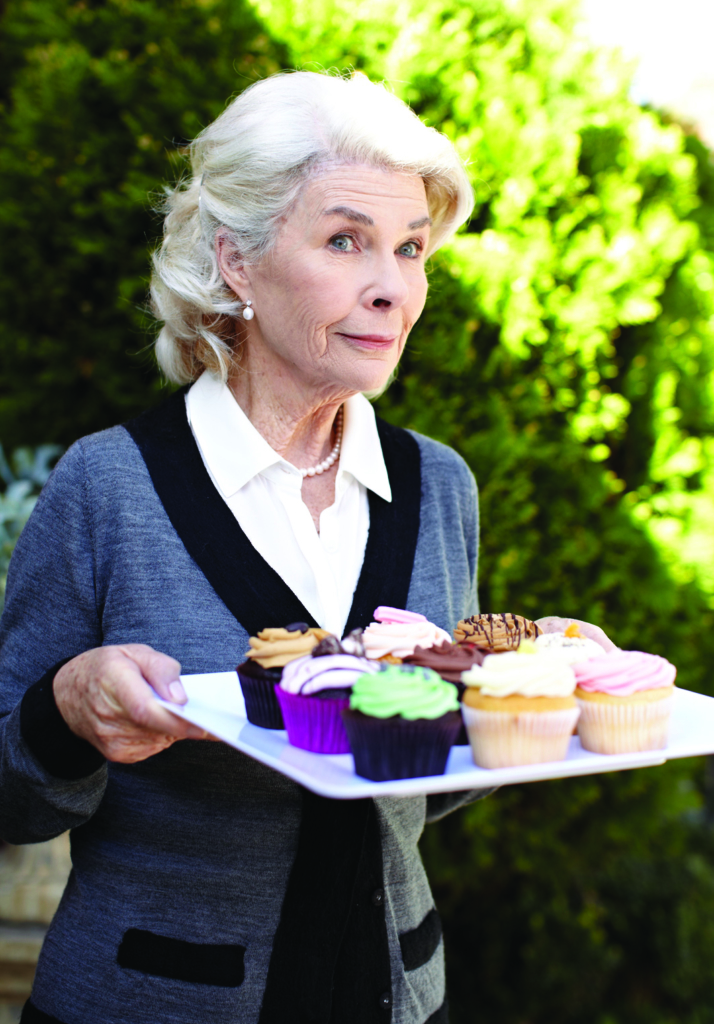
Whereas the Denyar-Brights experience class as a moral distance, what discomfits the Wheelers is the financial distance between them and Bess. To the Denyar-Brights, spending is an investment or a generous gesture. But the Wheelers’ expensive business makes their finances more precarious, requiring them to juggle credit cards and make trade-offs between buying lunch and petrol. Amber, despite struggling to extract child support from her unemployed ex, has the financial savvy that grants her respect within the family. She manages their business affairs – ‘I make people afford what they can’t for a living’ – so it hurts her to see her newfound elder sister embraced by her parents despite Bess’ lack of frugality. Having goaded Bess into getting drunk, Amber sneers as she returns in a taxi the next morning to collect her car: ‘Must be nice to fork out hundred-dollar cab fares every time you get untidy.’ And Amber is furious that Shawn is collecting her old household goods for a garage sale that Oscar and Edwina are holding to raise money for their sponsor child: ‘I have a sponsor child! His name’s Shawn!’
The two families’ conflicting financial attitudes reach a crisis point in the Season 1 finale as an excited Bess pays for a A$150,000 dragster engine on the understanding that the Wheelers will pay her back when they win the race … which they lose. After an uncomfortable confrontation, mother and daughter reconcile: ‘I didn’t want to owe you more,’ explains Julie. ‘I gave you up, I did, and I just didn’t want to be in debt to you all over again.’
Tastes, lifestyles and the ‘reality-drama’ aesthetic
One of bogan TV’s foundational moments was the 1992 series Sylvania Waters, an early example of the ‘docusoap’ or ‘reality-drama’ subgenre of reality television. It contrasts the spending patterns of affluent Noeline Baker and Laurie Donaher, who are loud-mouthed and uninhibited, with those of Noeline’s cash-strapped son Paul Baker and his girlfriend, Dione, who come across as modest. Noeline and Laurie ‘overdo’ their consumerism, the series implies, because they don’t know how to consume ‘properly’.
Laughter acts as a distancing mechanism … But because Upper Middle Bogan incorporates mobility into its narrative structure, it doesn’t allow us this kind of complacency.
The same reality-drama aesthetic – naturalistic, handheld camerawork; apparently improvised dialogue – is adopted by Kath & Kim in a self-conscious way that emphasises the hyper-mediatised world inhabited by protagonists Kath (Jane Turner) and her daughter, Kim (Gina Riley). Kath and Kim consume strategically, carving out a suburban space for themselves and projecting their identities through their tastes in clothes, food, entertainment, personal philosophies, home furnishings and even sexual partners. But the series suggests they are bogans by presenting them as risibly incompetent shoppers – people with ‘poor taste’. Thus, Kath & Kim – along with the Channel Ten series The Shire, set in Sydney’s Sutherland Shire, where the beachside suburb of Sylvania Waters is located[16]Bogans have long figured in the shire. But while they were once the interloping ‘westies’ clashing with surfies on the beach (see Gabrielle Carey & Kathy Lette, Puberty Blues: A Surfie Saga, McPhee Gribble, Melbourne, 1979), since the 2005 Cronulla riots the surfies are the ones being branded as bogans. Consequently, bogan has taken on new meanings to do with ignorant racism and Anglo-ethnic chauvinism. – coincides with the emergence of the ‘cashed-up bogan’.[17]Mel Campbell, ‘Perhaps There’s a Little Bogan in Everyone’, The Sydney Morning Herald, 8 June 2006, <http://www.smh.com.au/news/opinion/perhaps-theres-a-little-bogan-in-everyone/2006/06/07/1149359814143.html>, accessed 14 April 2014. By lampooning the ‘vulgar’ tastes of prosperous blue-collar workers who have benefited from the resources boom, cultural gatekeepers can reinscribe the social primacy of their traditionally elite but now precarious and resources-starved professions.[18]Barbara Pini & Josephine Previte, ‘Bourdieu, the Boom and Cashed-up Bogans’, Journal of Sociology, vol. 49, nos 2–3, June–September 2013, pp. 256–71.
The Wheelers, however, are much more like traditional ‘battlers’ than cashed-up bogans. Upper Middle Bogan deploys a familiar reality-drama aesthetic – it repeatedly frames and reframes its action in short, jittery zooms and pans intended to evoke shooting on the fly – but, refreshingly, it doesn’t follow Kath & Kim and Housos in setting up its characters’ tastes and lifestyles as obvious punchlines. Instead, it lets them surface as background colour – lemon wedges in beer bottles here, movie preferences there. The series is much more interested in the way tastes function as conduits for characters to display their affection and help each other solve problems. Margaret is the most broadly drawn character, but she finally reveals her humanity when she tells Brianna Wheeler, who eventually becomes her personal trainer, about her grief over her inability to conceive naturally: ‘I’ve kept this Bess thing secret for so long I don’t know how to talk about it.’ Margaret’s cathartic moment is enabled by her unexpected bond with Brianna over ‘silly things like clothes and hair’, which Brianna protests are, in fact, ‘not silly’. Similarly, when Edwina’s classmates mock her for playing the bassoon, Shawn introduces her to the rude interjection in the Angels song ‘Am I Ever Gonna See Your Face Again’,[19]That interjection, shouted out in the instrumental breaks of the chorus, is: ‘No way, get fucked, fuck off!’ which she triumphantly plays at her school music concert. And when Bess’ bullying surgeon-boss forces her to participate in a game of golf – a sport she can’t play – Wayne steps in and wins the game. In return, Bess installs special mirrors in Wayne’s car to compensate for his limited vision, enabling him to regain his driver’s licence.
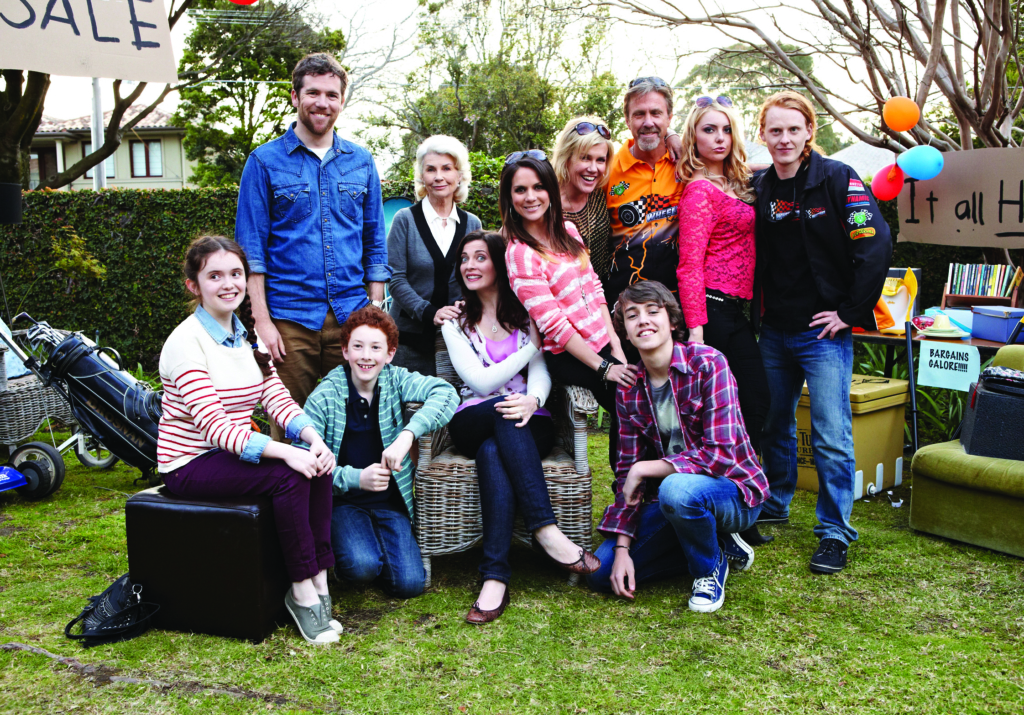
Conclusion
Bogan comedies may suggest that bogans are ‘contained’ within marginal, suburban locations. There, they can never leave, while we, the non-bogan viewers, can temporarily enter their small (and, it’s implied, small-minded) worlds in order to laugh at them. This laughter acts as a distancing mechanism – it enables us to feel contempt for the grotesque and morally repugnant aspects of Australian life that bogans represent without being complicit in them. But because Upper Middle Bogan incorporates mobility into its narrative structure, it doesn’t allow us this kind of complacency. Rather than emphasising alienation and containment, Upper Middle Bogan is a story about identification and conciliation.
At every turn, Upper Middle Bogan’s characters must navigate the loose, relational structures of class in contemporary Australia, and confront the arbitrariness and rudeness of their prejudices. They leverage the socioeconomic structures and cultural knowledges bestowed by their relative class positions to find common ground as a family, rather than to quarantine themselves from one another. Thus, the freeway that connects Bess’ old and new family literalises the ‘affective flows’ that, as cultural critic Penny Rossiter observes, make the figure of the bogan ‘the mobile and fluid expression of a relational politics of class, a figure that circulates’.[20]Penny Rossiter, ‘Bogans: A Sticky Subject’, Continuum: Journal of Media & Cultural Studies, vol. 27, no. 1, 2013, p. 88.
Endnotes
| 1 | ‘About’, Upper Middle Bogan, ABC website, <http://www.abc.net.au/tv/programs/upper-middle-bogan/>, accessed 4 April 2014. |
|---|---|
| 2 | Chris Gibson, ‘Welcome to Bogan-ville: Reframing Class and Place Through Humour’, Journal of Australian Studies, vol. 37, no. 1, March 2013, pp. 62–75. |
| 3 | ibid., p. 63. |
| 4 | Barbara Pini & Josephine Previte, ‘Gender, Class and Sexuality in Contemporary Australia: Representations of the Boganette’, Australian Feminist Studies, vol. 28, no. 78, December 2013. |
| 5 | Bruce Moore, Speaking Our Language: The Story of Australian English, Oxford University Press, Melbourne, 2008, p. 173. See also Kim Stephens, ‘Bogan Pride: Queensland Linguistics Researcher Looks at the Evolution of the Word’, Brisbane Times, 2 December 2013, <http://www.brisbanetimes.com.au/queensland/bogan-pride-queensland-linguistics-researcher-looks-at-the-evolution-of-the-word-20131202-2yld4.html>, accessed 12 April 2014. |
| 6 | For example, see E Chas McSween et al., Things Bogans Like, Hachette, Sydney, 2010; and E Chas McSween et al., Boganomics: The Science of Things Bogans Like, Hachette, Sydney, 2011. |
| 7 | Melissa Campbell, ‘Bogan: Exploring Images of Australian Cultural Marginalisation’, Master’s thesis, University of Melbourne, Victoria, 2004. |
| 8 | Amy McNeilage, ‘Any Self-respecting Bogan Knows – “West” Is Passe’, The Sydney Morning Herald, 23 November 2013, <http://www.smh.com.au/comment/any-selfrespecting-bogan-knows–west-is-passe-20131122-2y0ji.html>, accessed 12 April 2014. |
| 9 | Leo Shanahan, ‘The Lost Tribes of Bogan: Booners, Westies and Bevans’, The Punch, 4 August 2009, <http://www.thepunch.com.au/articles/the-lost-tribes-of-bogan-booners-westies-and-bevans/>, accessed 6 April 2014. |
| 10 | Melissa Campbell, ‘Little Bogan Lost: Examining Media Treatment of the Jaidyn Leskie Murder Case’, Media International Australia, Incorporating Culture & Policy, issue 104, August 2002, pp. 116–26. |
| 11 | David Hetherington, ‘Paxtons Have Gone but Dole Trap Remains’, The Australian, 18 August 2012, <http://www.theaustralian.com.au/national-affairs/opinion/paxtons-have-gone-but-dole-trap-remains/story-e6frgd0x-1226452874460>, accessed 20 April 2014. |
| 12 | Sam Leith, ‘Whatever Happened to the Working-class Sitcom?’ The Guardian, 25 January 2011, <http://www.theguardian.com/tv-and-radio/2011/jan/24/working-class-sitcoms>, accessed 4 April 2014. |
| 13 | ‘Enough to Make You Gropeable’, The Sydney Morning Herald, 25 October 2003, <http://www.smh.com.au/articles/2003/10/24/1066974307401.html>, accessed 20 April 2014. |
| 14 | ‘Housos Is TV for Bogans’, The Sydney Morning Herald, 19 October 2011, <http://www.smh.com.au/entertainment/tv-and-radio/housos-is-tv-for-bogans-20111018-1lyhb.html>, accessed 14 April 2014. |
| 15 | Nick Galvin, ‘Housos Stars Reveal Australia’s Biggest Bogans: “I’d Probably Be Scared”’, The Sydney Morning Herald, 1 April 2014, <http://www.smh.com.au/entertainment/tv-and-radio/housos-stars-reveal-australias-biggest-bogans-id-probably-be-scared-20140401-35vpo.html>, accessed 21 April 2014. |
| 16 | Bogans have long figured in the shire. But while they were once the interloping ‘westies’ clashing with surfies on the beach (see Gabrielle Carey & Kathy Lette, Puberty Blues: A Surfie Saga, McPhee Gribble, Melbourne, 1979), since the 2005 Cronulla riots the surfies are the ones being branded as bogans. Consequently, bogan has taken on new meanings to do with ignorant racism and Anglo-ethnic chauvinism. |
| 17 | Mel Campbell, ‘Perhaps There’s a Little Bogan in Everyone’, The Sydney Morning Herald, 8 June 2006, <http://www.smh.com.au/news/opinion/perhaps-theres-a-little-bogan-in-everyone/2006/06/07/1149359814143.html>, accessed 14 April 2014. |
| 18 | Barbara Pini & Josephine Previte, ‘Bourdieu, the Boom and Cashed-up Bogans’, Journal of Sociology, vol. 49, nos 2–3, June–September 2013, pp. 256–71. |
| 19 | That interjection, shouted out in the instrumental breaks of the chorus, is: ‘No way, get fucked, fuck off!’ |
| 20 | Penny Rossiter, ‘Bogans: A Sticky Subject’, Continuum: Journal of Media & Cultural Studies, vol. 27, no. 1, 2013, p. 88. |
